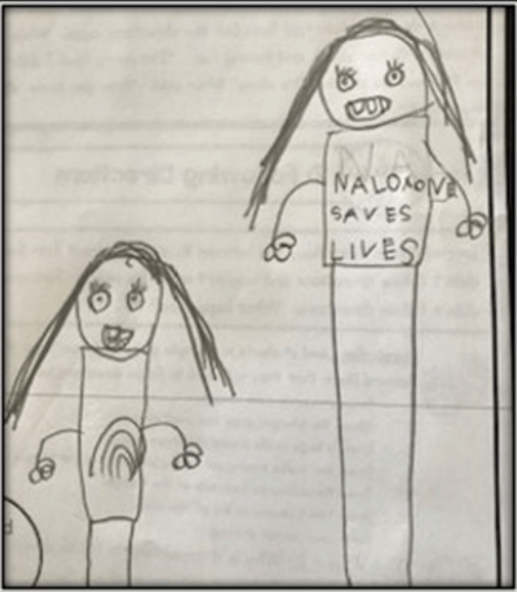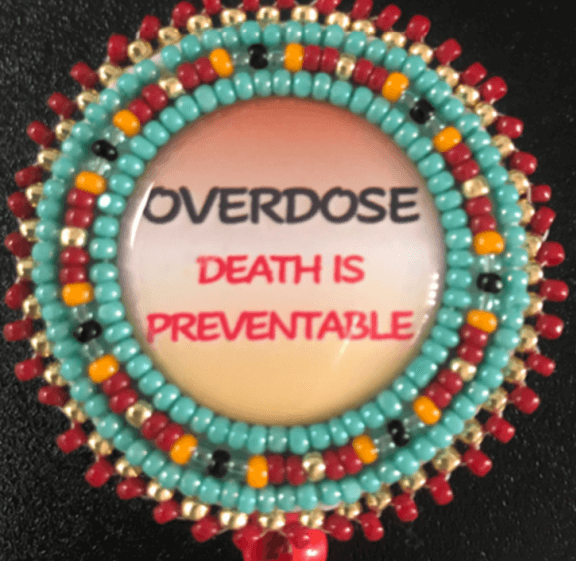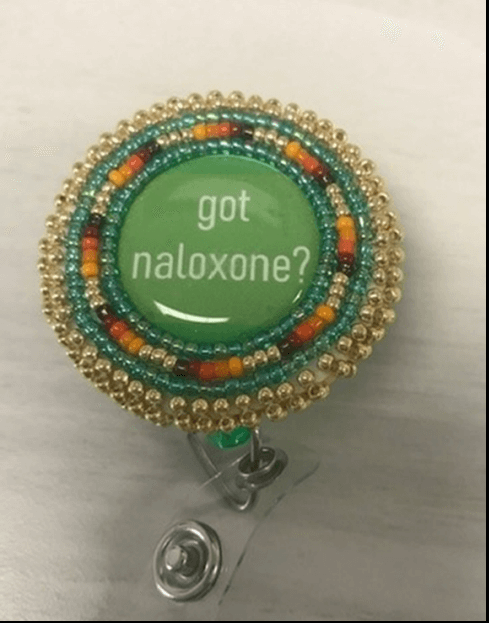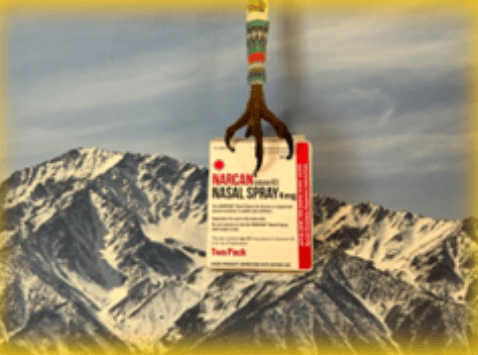Native Harm Reduction Toolkit
Welcome To NHRC's Native Harm Reduction Toolkit!
This toolkit was imagined and created by Arlene Brown, member of the Bishop Paiute Tribe, with support from NHRC staff, including Jessica Smith. It has been informed by Tribal and Urban Native people from across California and brings together resources from Indigenous harm reduction leaders from across the country and beyond.
Acknowledgments
We want to acknowledge and thank the individuals who participated in interviews to help inform the Native Harm Reduction and Dismantling Stigma trainings, both of which are included in this toolkit. We also want to thank the individuals who shared their voices and experiences with harm reduction, treatment, and recovery for the "Bringing Harm Reduction to Your Community" section of this toolkit.
Additionally, this toolkit would not be possible without funding from CIGNA. Their support has allowed us to collaborate with Native leaders in California in a meaningful way and cultivate lasting relationships that will continue to help save lives.
Please use the information in the image to find out whose land you are on, and take a moment to respectfully acknowledge the original stewards of the land. If you wish to go beyond acknowledgement, there are opportunities, such as paying a voluntary land tax or honor tax , to tangibly recognize and respect the sovereignty of Native Nations.
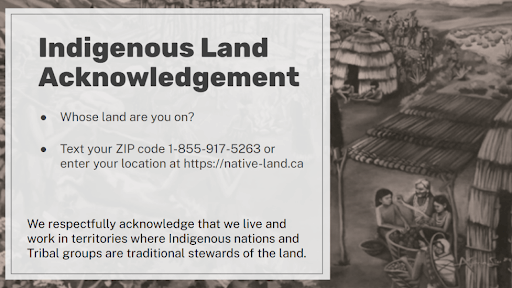
Background
Who Created This?
- A collaboration between NHRC & Native Harm Reduction Consultant Arlene Brown, member of the Bishop Paiute Tribe.
- In 2020, NHRC conducted interviews with California Native service providers, people who use drugs, and people in recovery to better understand the harm reduction training and education needs of Tribal and Urban Native communities.
- Two trainings were created by Arlene - Foundations of Native Harm Reduction & Dismantling the Stigma of Substance Use and Harm Reduction Among Our Native People.
- Arlene later imagined this toolkit, which incorporates 3 trainings along with other resources.
Who is This For?
- Native communities interested in starting or expanding harm reduction services
- Communities that are struggling to get buy-in or support for harm reduction from leaders or elders
- Native and Non-Native service providers who want to offer more culturally-appropriate harm reduction and treatment services to Native participants
- Tribal Leaders and Elders who want to learn more about implementing harm reduction in their communities to help save lives
Background
Why a Native Harm Reduction Toolkit?
National Harm Reduction Coalition recognizes the impact that colonialism, historical trauma, and the racist war on drugs have had on Indigenous communities in California and beyond. We aim to create resources and materials that are informed by the people and communities they are meant to support. This specific toolkit was created to empower California Native communities to imagine, create, and implement harm reduction services for themselves, recognizing the need for Indigenized and decolonized approaches to public health interventions. This is a living toolkit that can and should be updated as Native communities continue to develop innovative and culturally responsive strategies to support their people.
Harm reduction utilizes a spectrum of strategies to reduce the negative consequences associated with drug use, sex work, and other behaviors.
Harm Reduction Is:
- Non-judgmental
- Radical compassion
- Meeting people where they are at
- Respectful of bodily autonomy
- Flexible
- Person-centered
- Pragmatic & Realistic
- Anti-oppressive
- Supportive of any positive change
- Evidence-based
Harm Reduction Is Not:
- Rigid or static
- Punitive
- Stigmatizing
- Isolating
- Fear-based
- Abstinence-focused (abstinence is seen as one of many options a person can choose for their health and well-being, just not the only option)
Some harm reduction services include overdose prevention (naloxone, drug testing, overdose prevention education); providing sterile drug use equipment, condoms, and safer drug use/safer sex education; medication for opioid use disorder(MOUD)/medication assisted treatment (MAT); safe consumption sites; case management; HIV & Hep C testing & treatment; referrals to other services.
Before it was ever called harm reduction, Indigenous, Black, and other People of Color were figuring out the most effective and culturally responsive ways to keep their communities healthy and safe in the face of racism, colonialism, and historical trauma.
- Decolonizing Harm Reduction : going beyond strategies for addressing substance use by interrogating colonials systems and structures that shape and constrain the lives of Indigenous people; centering power and control in places where it has been systematically removed.
- Indigenizing Harm Reduction : creating and supporting policies, programs, and practices that are grounded in cultural traditions, Indigenous knowledge, ceremonies, land, and languages.
Examples of decolonizing and Indigenizing harm reduction include:
- Using cultural symbols to describe the principles and practices of harm reduction
- Providing cultural items and medicines in harm reduction kits
- Creating educational resources that utilize Native art and include Native people
- Incorporating cultural practices and ceremonies into services
- Replacing mainstream models of healthcare and harm reduction with models rooted in Indigenous knowledge and culture
Stigma is a set of negative and often unfair beliefs that a society or group of people have about something or someone
The stigma around drug use and harm reduction services can negatively impact Natives who use drugs (NWUD). There are different ways stigma can show up in someone's life, even when they are trying to seek services and cultural activities that are meant to help them heal.
Stigma can:
- create more isolation
- keep lifesaving medication out of reach
- dehumanize relatives and tribal members
- reduce someone's willingness to seek help
- prevent access to lifesaving services and culture
Destigmatizing harm reduction and substance use can save lives AND respect cultural beliefs and practices
- Harm reduction is connectedness.
- Harm reduction recognizes and supports people on their journey. It offers everyone a place in the circle.
- Harm reduction creates space for healing and wellness.
- Harm reduction looks beyond individual behaviors and helps us see the whole person.
Connecting Natives who use drugs to their culture can have a life-saving impact. And while not all ceremonies, traditions, or medicines are available to people who use drugs, try thinking creatively about ways people can still be connected to their culture.
- Are there ceremonies, talking circles, or other cultural practices that can be inclusive of or specifically for Natives who use drugs or Natives in recovery?
- What kind of cultural items or symbols can be included in or branded on harm reduction kits?
- Can services be provided in people's native languages?
- What traditional medicines can be shared?
Bringing Harm Reduction To Your Community
The following section will provide tips on how to create or expand harm reduction services in your community. As you've seen through this toolkit, there is no one-size-fits-all approach to doing harm reduction, and this is especially true when creating services that are unique to your cultural beliefs and needs.
The foundation of this section is understanding what people in your community need.
- What services do they need?
- Where and when are they needed?
- What do leaders and elders need to feel invested in harm reduction?
- What cultural and spiritual traditions need to be included in services?
- What strengths and challenges already exist to bringing harm reduction to your community?
Understanding the Need
Who decides what services you need?
Services are most impactful and successful when they are informed and led by the people who will use them. Harm reduction empowers people with lived and living experience of drug use/sex work/homelessness/mental health challenges to create and provide the services they and their community need. It's ok if that's not your experience, but if you are interested in creating or expanding services be sure to ask people what, when, where, and how they prefer to have them. Ask about what they're seeing on the ground related to overdose and the drug supply. Invite them to be involved in the planning and creation of these services. Remember the individuals you are hoping to service have likely experienced a lot of stigma in their life and may feel hesitant to provide this information. Building trust and rapport is crucial to this first step!
Data can highlight the need for services
Sometimes elected officials, community leaders, and other community stakeholders will want to see evidence of the need for harm reduction services in your community. Having access to overdose and infectious disease rates along with feedback and stories from future participants can go a long way in showing just how important and life-saving these services can be for your community.
- Building relationships with your local public health department and epidemiologist can help you acquire data on rates of infectious diseases such as HIV and Hep C.
- The California Department of Public Health hosts the Overdose Surveillance Dashboard which can show you overdose rates by county, zip code, and demographics.
- The California Tribal Epidemiology Center is available for technical assistance.
Even when there is a clear need, the broader community might not be ready to embrace certain harm reduction services. A Community Readiness Assessment can help you determine which services you try to implement first.
The Tri-Ethnic Center for Prevention Research at Colorado State University developed the Community Readiness Model - with associated tools and a handbook - which measures a community's readiness to address a given issue on 5 key dimensions:
- Community knowledge of the issue
- Community knowledge of efforts
- Community climate
- Leadership
- Resources
The key components of the model include survey questions, key informant interviews, scoring the interviews, calculation of readiness scores on the five dimensions, and using the readiness scores to develop a plan for action.
You can always adapt the process and assessment tool to fit your community's needs and capacity or find additional support through an organization like CAAN, which has created the Keeping Our Fires Community Readiness Training specifically to support Indigenous communities.
Engaging Tribal Leaders & Elders
Leaders & Elders hold the power to support or hinder harm reduction services.
How can we ensure they help?
- Understand their position or stance on harm reduction. If they are unsupportive, try to understand why and meet them where they're at.
- Provide education and training about harm reduction and ways services can be Indigenized and decolonized.
- Try to provide an understanding of how stigma negatively impacts Native communities. Let them know they have the power to save lives.
- Remind them of the impact that overdose has had on Native communities; shouldn't all available, evidence-based solutions be tried?
- Focus on healing - physical, spiritual, emotional, and cultural for both the individual and the entire community.
What if leadership just won't budge?
- Tribal Council, boards, and other leaders do change over time, so pay attention to elections and determine if there might be new leadership who would be more supportive.
- Find and connect with other allies who provide services in your community to people who use drugs. Having a community-wide understanding of the need and commitment to creating new services can be more powerful than just a few people.
- Reach out to other Native-led harm reduction programs to see how they overcame barriers or got support from leaders and elders.
- Don't give up! Implementing services can sometimes be a long process. In the meantime, what can you do as an individual or small group to help keep your community safe? Can you get access to naloxone and pass it out to friends and family? Every action helps!
This toolkit and accompanying trainings are only a few of many resources on Native Harm Reduction. Native-led organizations and Native individuals throughout the state and beyond are keeping their communities and traditions alive through overdose prevention, harm reduction supply distribution, medication assisted treatment, and connecting people to their culture. We hope that this toolkit inspires you to explore what bringing Indigenized and decolonized harm reduction to your community could look like and are happy to support you on your journey.
Resources
Trainings:
- Dismantling the Stigma of Substance Use and Harm Reduction Among Our Native People, Arlene Brown & NHRC
- Good Medicine: MAT for Our Tribal & Urban Natives, Arlene Brown & NHRC
- Myths About Addiction Fact Sheet, First Nations Health Authority
- Talking About Substance Use Fact Sheet, First Nations Health Authority
- Expanding the Circle of Care: A Practical Guide to Syringe Services for Tribal & Rural Communities, Gwayakobimaadiziwin Bad River Needle Exchange
- It's Our Backyard Too: Building Community-Centered Support for Harm Reduction, NHRC
Videos:
- Harm Reduction in Indigenous Communities, Annette Hubbard & NHRC
- Taking Care of Each Other: Indigenizing Harm Reduction, First Nations Health Authority
- Connecting to Culture: Indigenous Harm Reduction Video Series, FIrst Nations Health Authority
California Resources:
- Tribal Response to the Opioid Epidemic in California 2020, Tribal MAT
- Tribal MAT Project Resources, CCUIH
- California Native Health Programs, Indian Health Services
- Opioid Response Projects, CRIHB
Got other resources to share? Want to let us know about the Native harm reduction services you provide? Email california@harmreduction.org and we can add them to this toolkit and our website!

